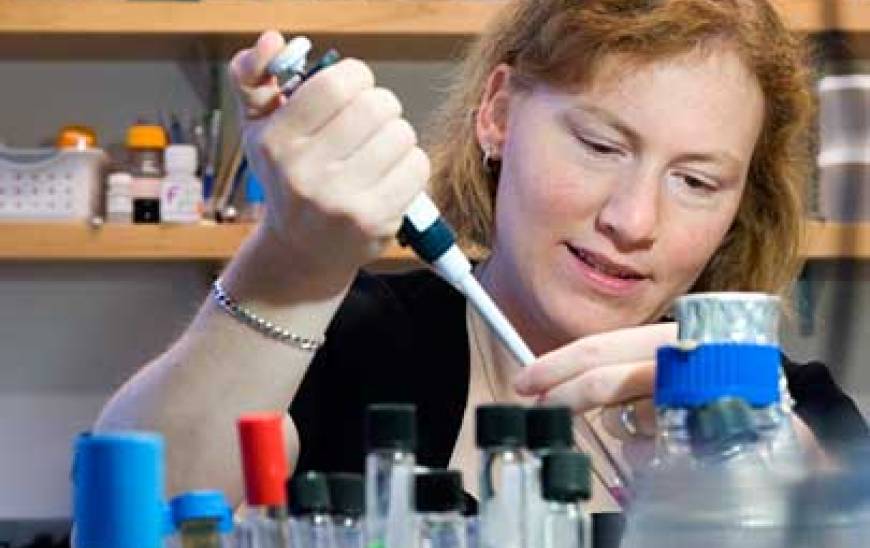The Stanford School of Earth, Energy & Environmental Sciences is now part of the Stanford Doerr School of Sustainability.
This page is currently being maintained for archival purposes only. For the latest information, please visit us here.
Understanding the nuances of nitrite cycling
By
Louis Bergeron
March 8, 2013
Tom Kleindinst, Woods Hole Oceanographic Institution

Karen Casciotti
Nitrogen is a key nutrient for the ocean’s phytoplankton and thus a crucial element in the oceanic food web. Understanding how nitrogen cycles through the marine environment is critical to understanding the role it plays in ocean ecosystems as well as how it forms nitrous oxide in the ocean, a potent greenhouse gas when it migrates to the atmosphere.
Karen Casciotti, Assistant Professor of Environmental Earth System Science (EESS), has developed a new method to track the mechanisms and rates of production of one of the most readily “digestible” form of nitrogen, called nitrite. The method uses the natural variation in the ratio of certain isotopes of nitrite to identify the most likely pathways and rates of nitrite production and consumption in the upper water column in the ocean. The nuances of nitrite cycling hold clues to the environmental limitations of some important biogeochemical processes, such as photosynthesis.
Casciotti conducted the research with Carolyn Buchwald, now a postdoctoral researcher at the Massachusetts Institute of Technology / Woods Hole Oceanographic Institution Joint Program in Chemical Oceanography. Their findings were published in the March 3, 2013 issue of Nature Geoscience. Buchwald, who is lead author of the paper, was a visiting student researcher in EESS during 2011 and 2012 before receiving her PhD from MIT/WHOI under Casciotti’s supervision.
The two researchers conducted analyses of nitrite isotopic ratios in the Arabian Sea. Their paper presents the first published data set for nitrite oxygen isotopes from the ocean and the first description of how these ratios can be used to trace microbial processes.



